|
Ultra Micro Nikkor 28mm F1.8 Early Model
|

Ultra-Micro-Nikkor 28mm F1.8 Early Model
Ultra-Micro-Nikkor 28mm F1.8 Early Model
Even now, Ultra Micro Nikkor generally refers to this lens.
Sometimes you can see this lens on the used camera market.
But still Ultra-Micro-Nikkor 28mm F1.8 is a rare lens.
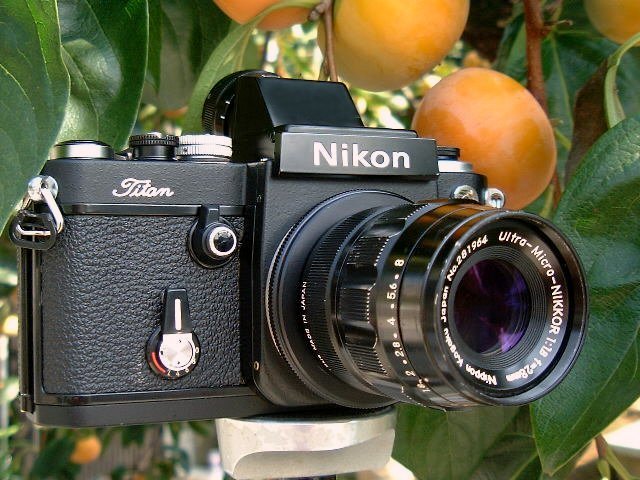
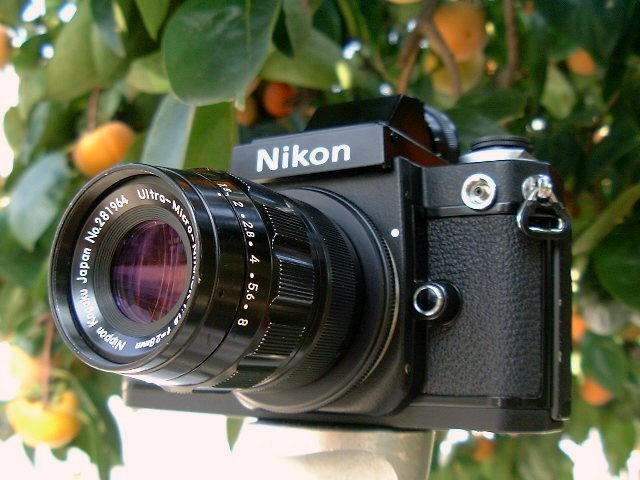
Japanese Autumn Fruit and Precise Lens
Ultra-Micro-Nikkor 28mm F1.8 Lens classification
When classifying the Ultra-Micro-Nikkor 28mm F1.8 lenses,
it is roughly divided into the early model and the late model,
and the late model can be further classified into 5 types.
Classification is summarized in the following table.
This article refers to the early model.
Ultra-Micro-Nikkor 28mm F1.8 Lens classification
|
Lens
|
Barrel
|
Engraving
|
Rare
|
|
Early Model
|
Tapered
|
Ultra-Micro-NIKKOR 1:1.8 f=28mm
Nippon Kogaku Japan No. 281964
|
☆
|
Late Model
Type 1
|
Cylinder
|
Ultra-Micro-NIKKOR 1:1.8 f=28mm
Nippon Kogaku Japan No. 282068
|
☆
|
Late Model
Type 2
|
Cylinder
|
Ultra-Micro-NIKKOR 1:1.8 f=28mm
M=1/10
Nippon Kogaku Japan No. 282372
|
☆
|
Late Model
Type 3
|
Cylinder
|
Ultra-Micro-NIKKOR 1:1.8 f=28mm
M=1/10 e
Nippon Kogaku Japan No. 48186X
|
☆
|
Late Model
Type 4
|
Cylinder
|
Ultra-Micro-NIKKOR 1:1.8 f=28mm
M=1/10 e
Nippon Kogaku Japan No. 29884X
|
☆
|
Late Model
Type 5
|
Cylinder
|
Ultra-Micro-NIKKOR 1:1.8 f=28mm
M=1/10 e
30009X Nikon
|
☆☆☆
|
- Tapered in the Barrel column indicates that the tip of the lens barrel is thin
- Cylinder in the Barrel column indicates that lens barrel is shaped like a cylinder
- Late model type 3 has e-line use and h-line use type
- The color of the serial number becomes green from the late model type 4
- The end of red engraving from type 3 is "e" or "h"
- There is no numero sign (No.) in the serial number of type 5
- Type 5 will be "Nikon" instead of "Nippon Kogaku Japan"
- ☆ mark indicates rare
- ☆☆☆ mark indicates very very rare
- Since the serial number seems to be not very regularity, so I don't use for classification
UMN 28mm F1.8 Early Model Features
The picture below was taken at the Nikon Kenkyukai Tokyo meeting.
Those are three Ultra-Micro-Nikkor 28mm F1.8 early model lenses.
Nikon Kenkyukai
November 2007 Report
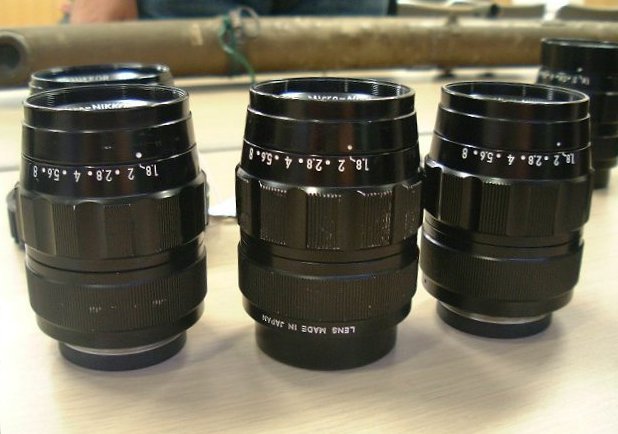
UMN 28mm F1.8 Early Model
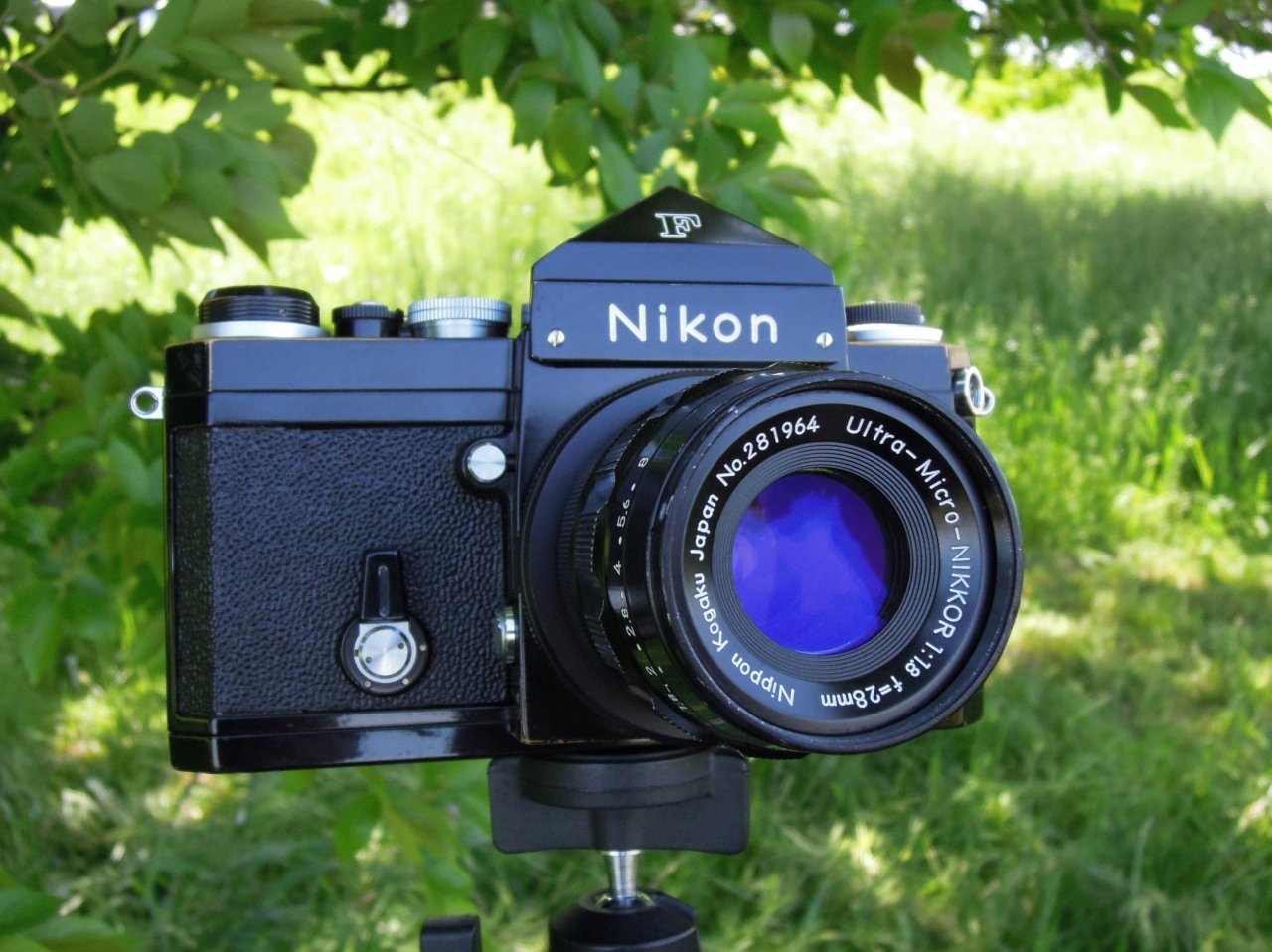
A front lens is small but strong eye is very sharp
Specifications
Ultra-Micro-Nikkor 28mm F1.8 (Early Model)
Focal length : 27.5 mm
Max. aperture : f/1.8
Min. aperture : f/8
Lens construction : 9 elements in 7 groups
Standard magnification : 1/10X
Picture angle : 7.6°
Standard wavelength : 546 nm (e-line)
Vignetting : 0%
Distortion : -0.06%
Aerial resolving power : 700 lines/mm
Image area : 4 mm⌀
Subject area : 40 mm⌀
Overall working distance : 315 mm
Filter size : d=40.5 mm p=0.5 mm
Mount : Leica L39 screw mount
Weight : 310 g
Actual weight : 308.5 g
Release date : 1965
Price :
160,000 Japanese YEN (1969)
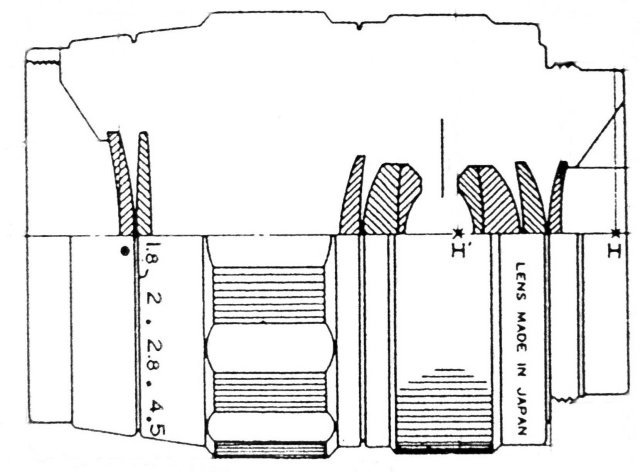
Ultra-Micro-Nikkor 28mm F1.8 Early Model Lens Construction
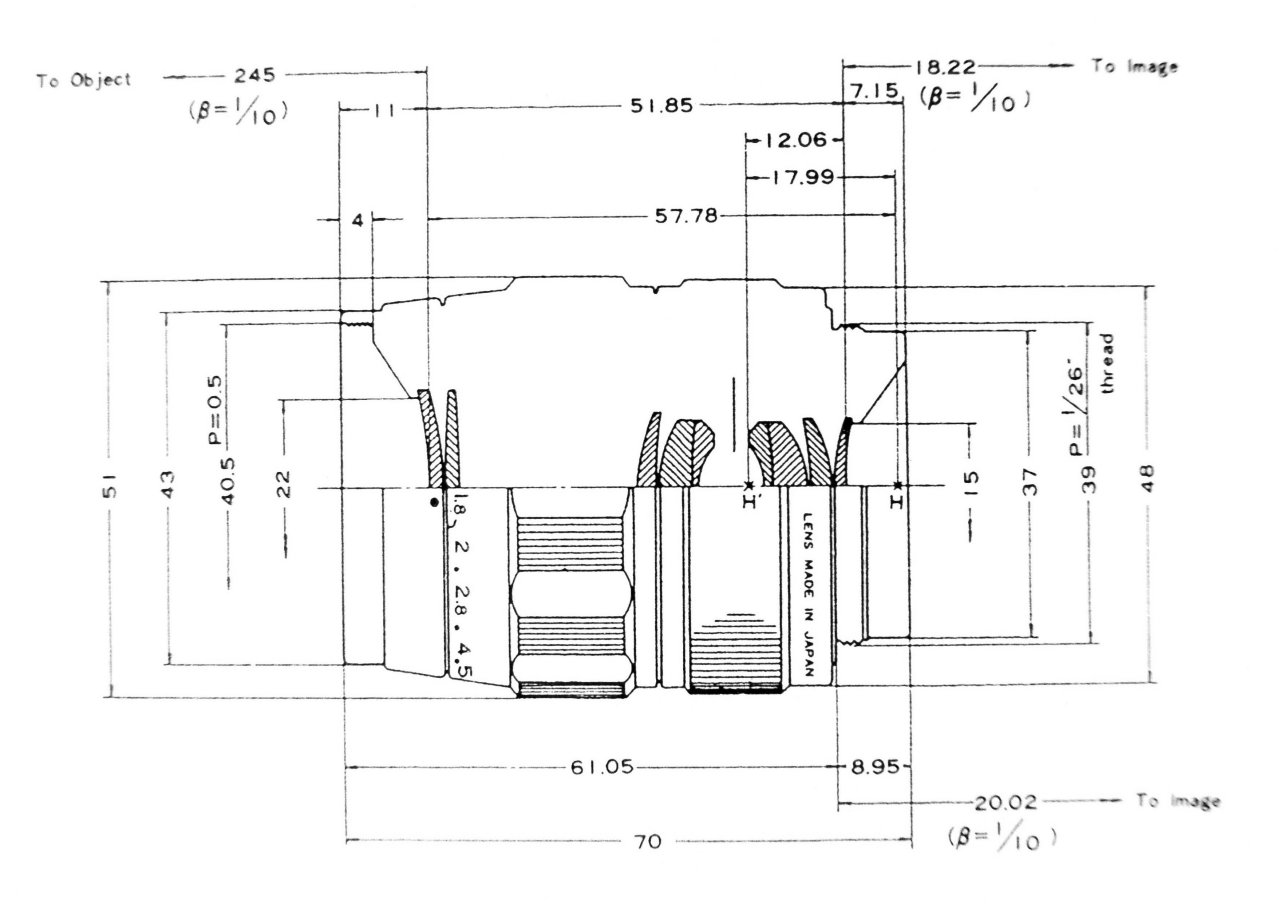
Ultra-Micro-Nikkor 28mm F1.8 Early Model Lens Construction

Ultra-Micro-Nikkor 28mm F1.8 in Field
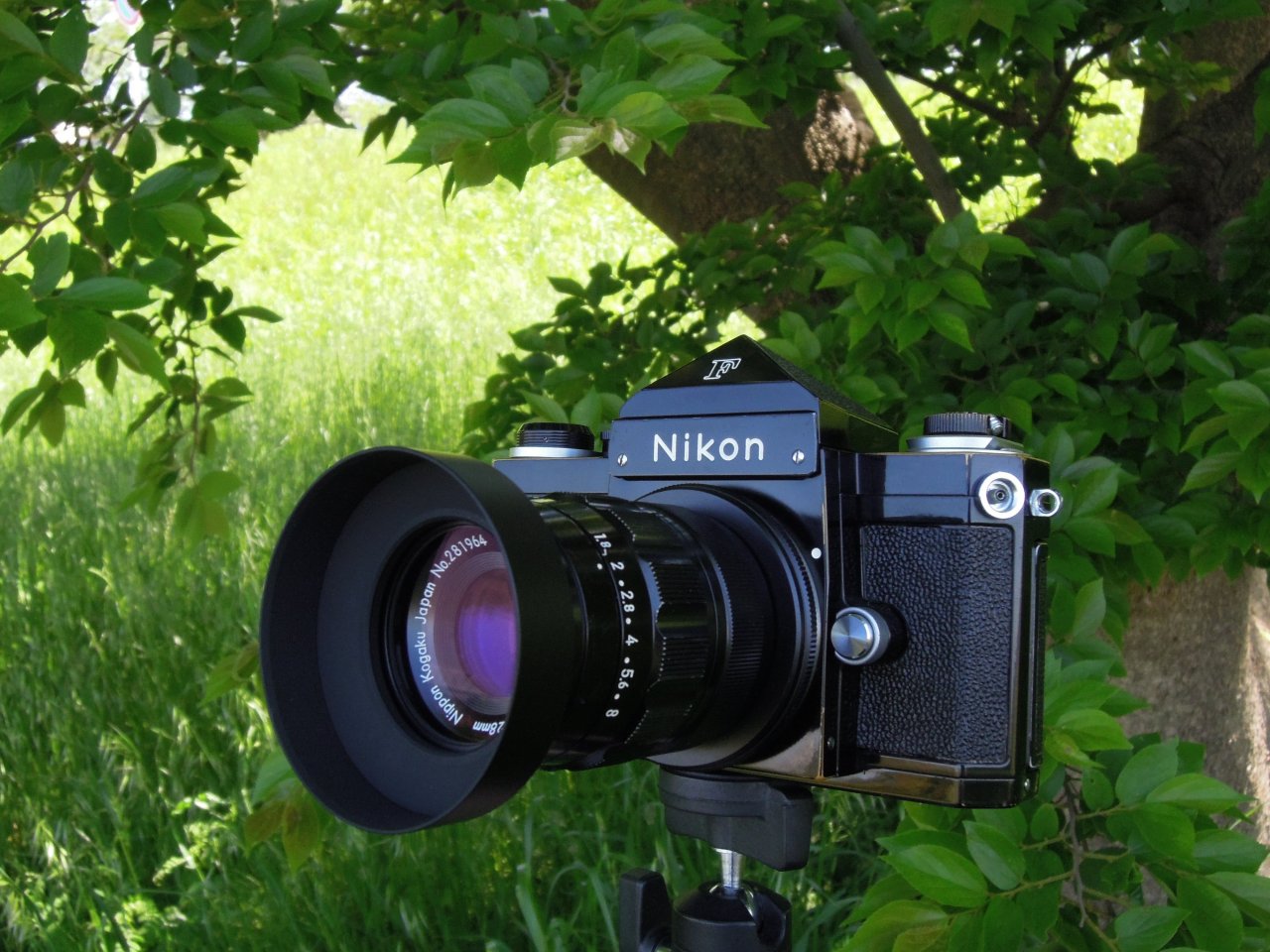
Intellectual Ultra-Micro-Nikkor is thinking under the shade
Mirrorless Interchangeable-Lens Camera
You can use the Ultra-Micro-Nikkor 28mm F1.8 lens easily with mirrorless camera.
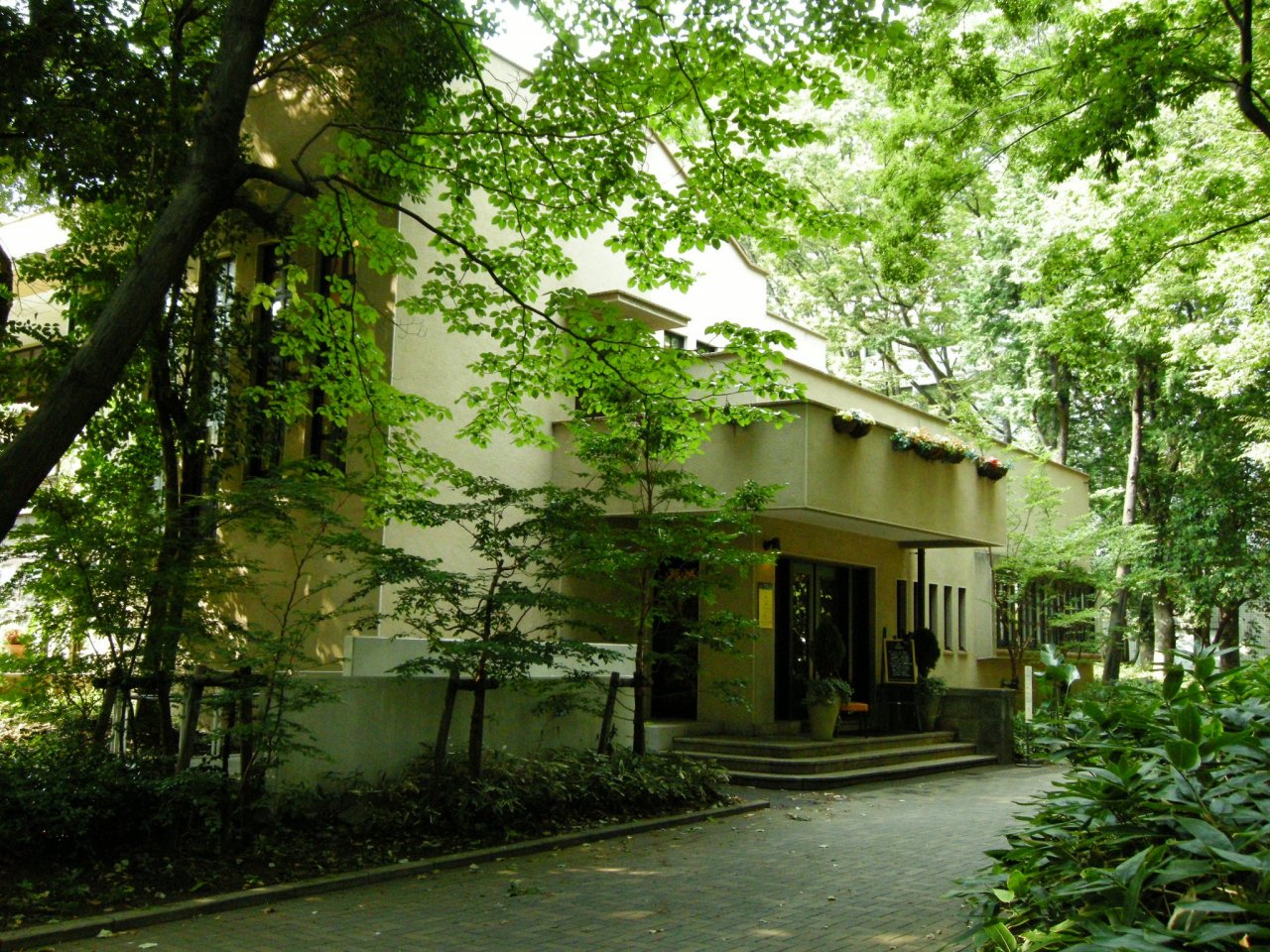
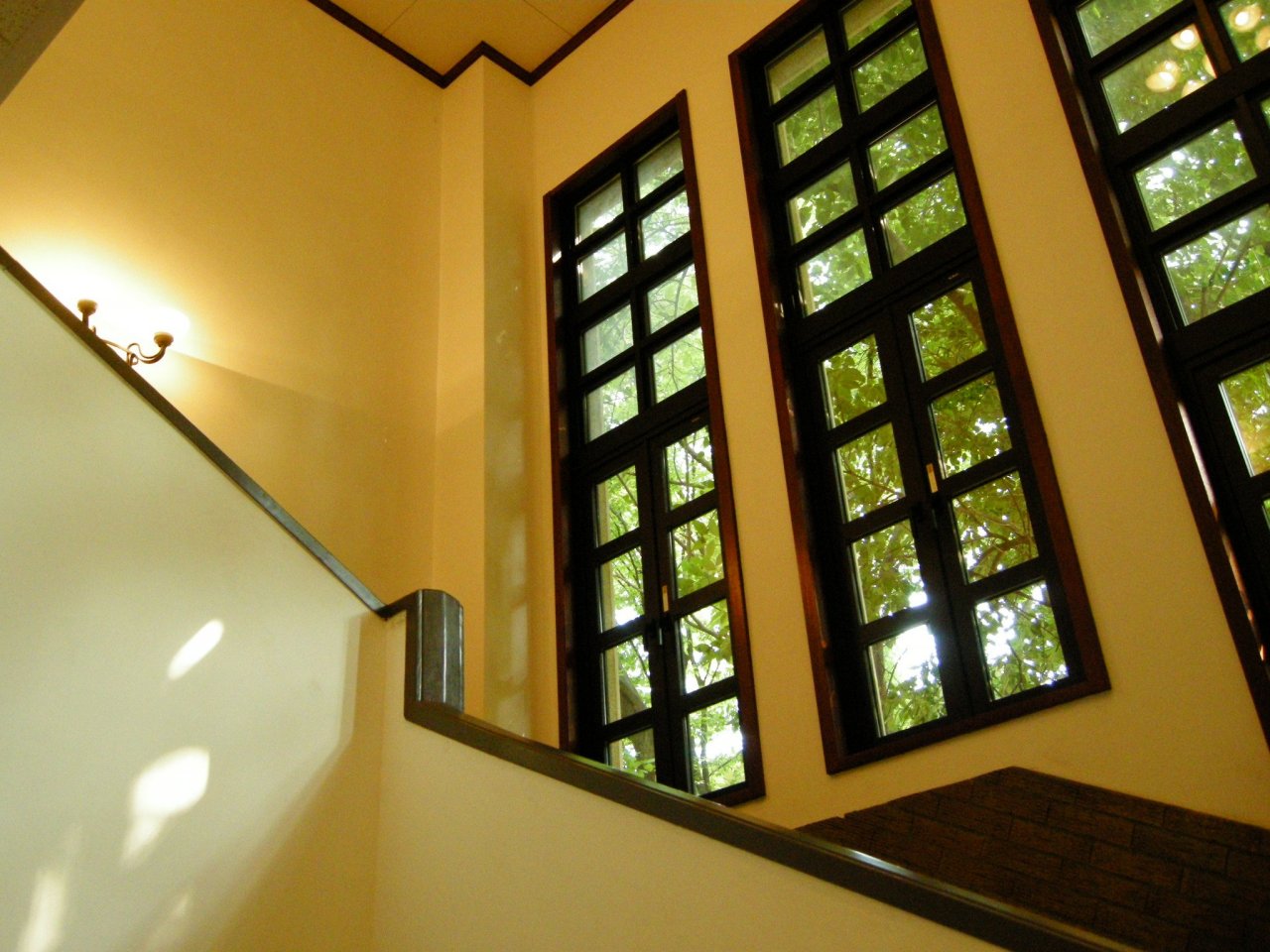
The Nikon Kenkyukai Tokyo Meeting of September 2009
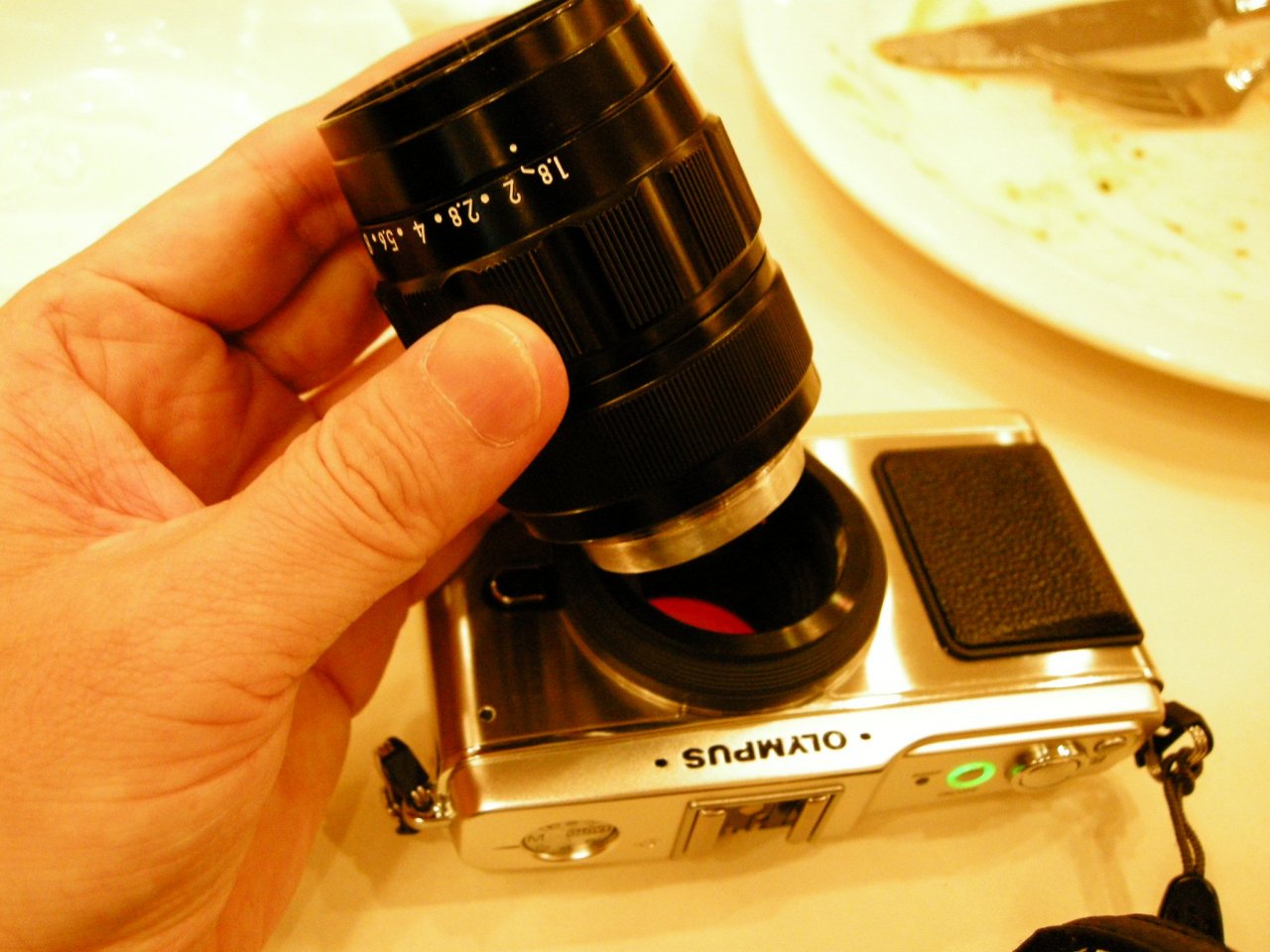
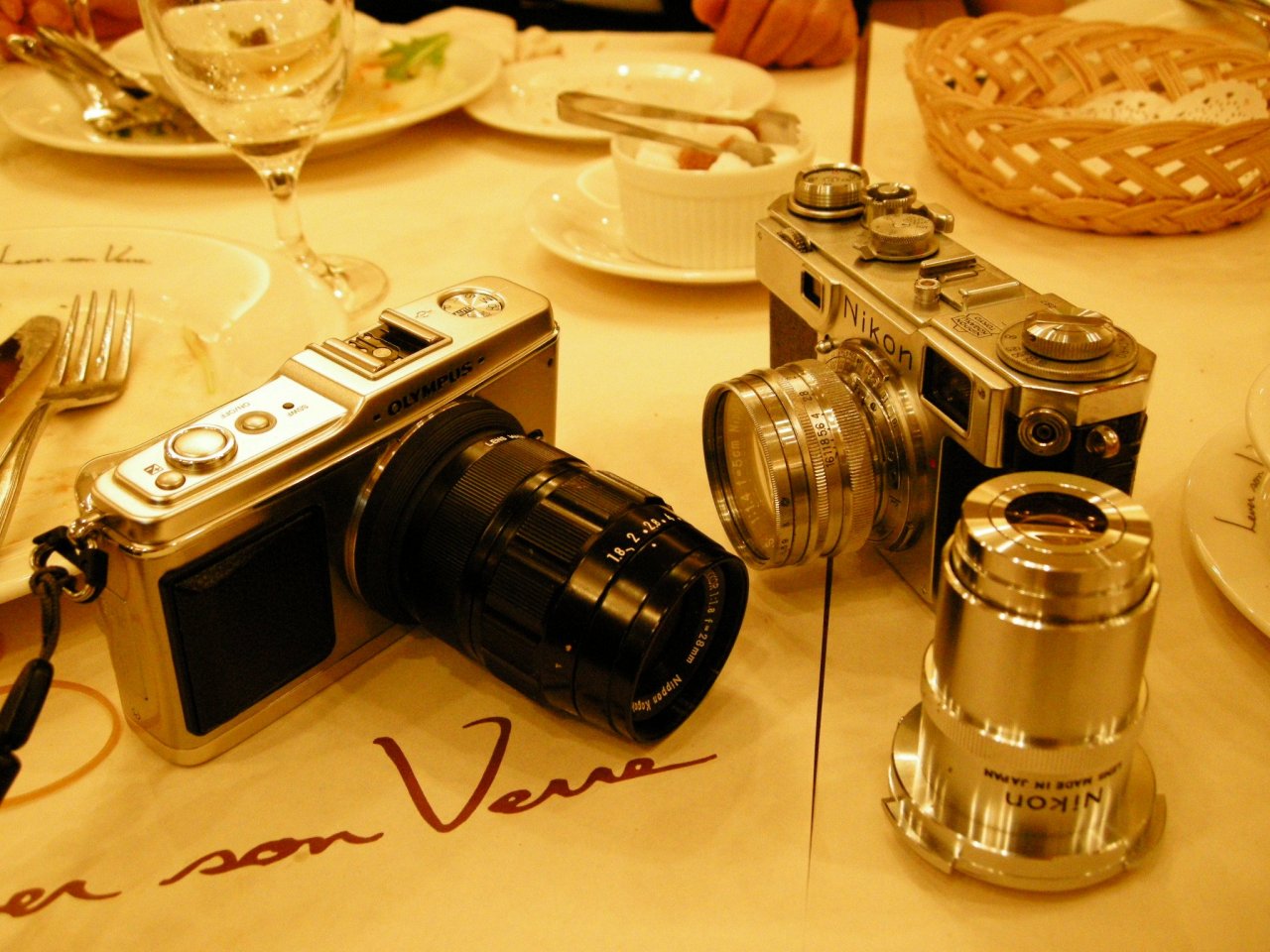
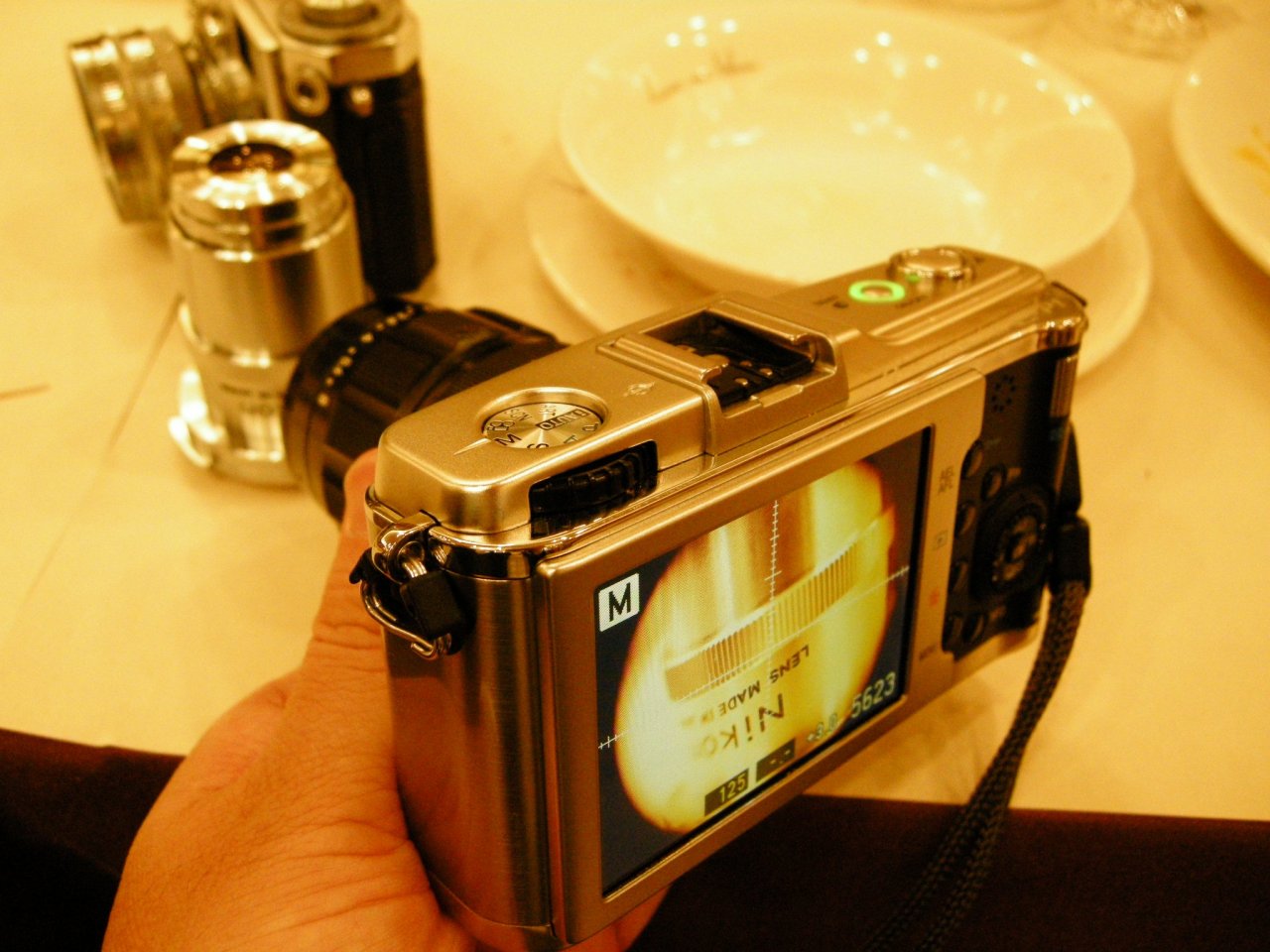
Ultra-Micro-Nikkor 28mm F1.8 with Mirrorless Camera
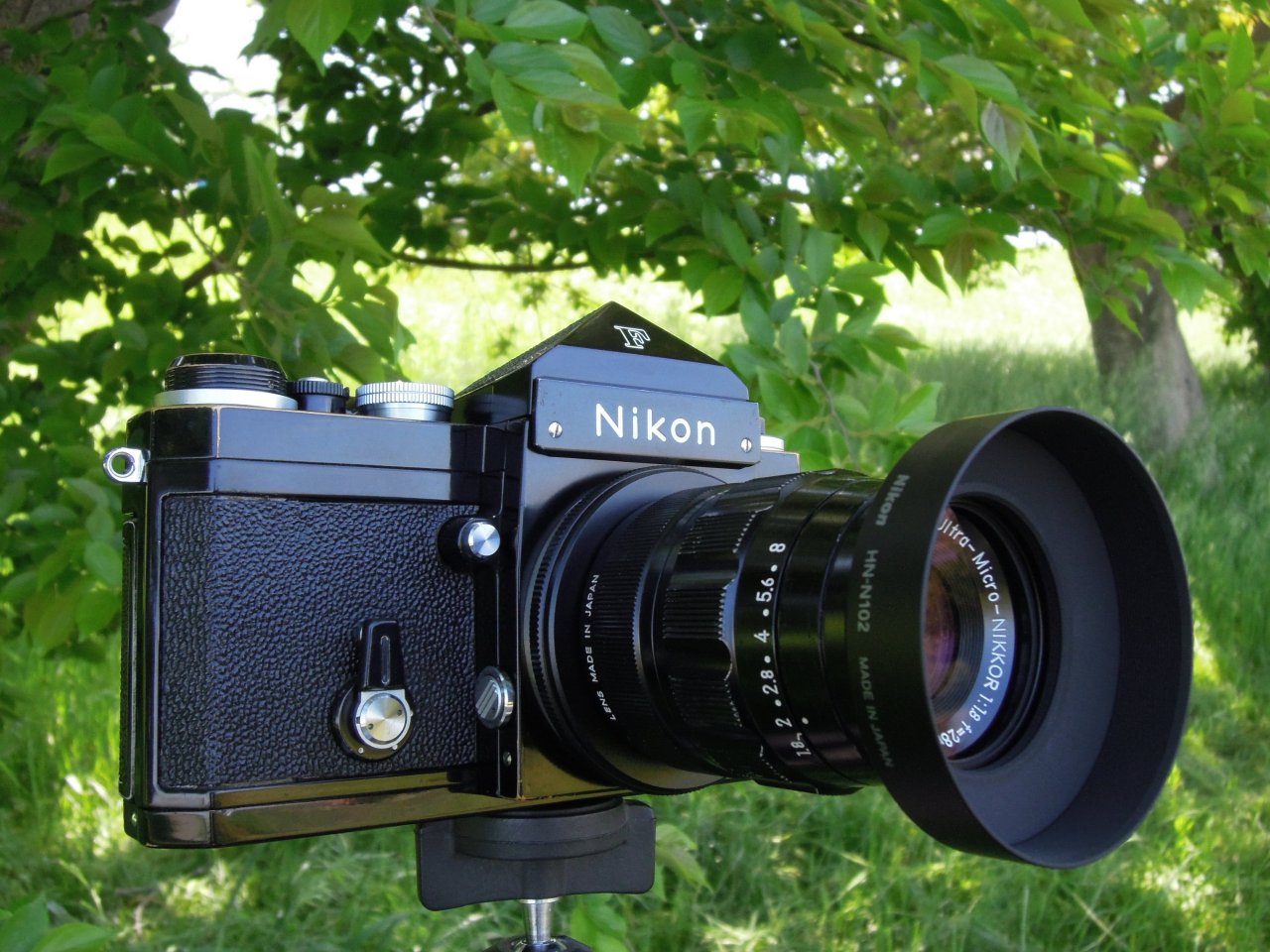
Ultra-Micro-Nikkor with Nikon 40.5mm HN-N102 Lens Hood
From the Nikon Museum 2018 Special Exhibition
Ultra Micro Nikkor 28mm F1.8 and other very rare prototype lenses were exhibited in
"Ultra Micro Nikkor Exhibition" so I would like to introduce to you.
You can get the large size image by clicking on the following some photographs.
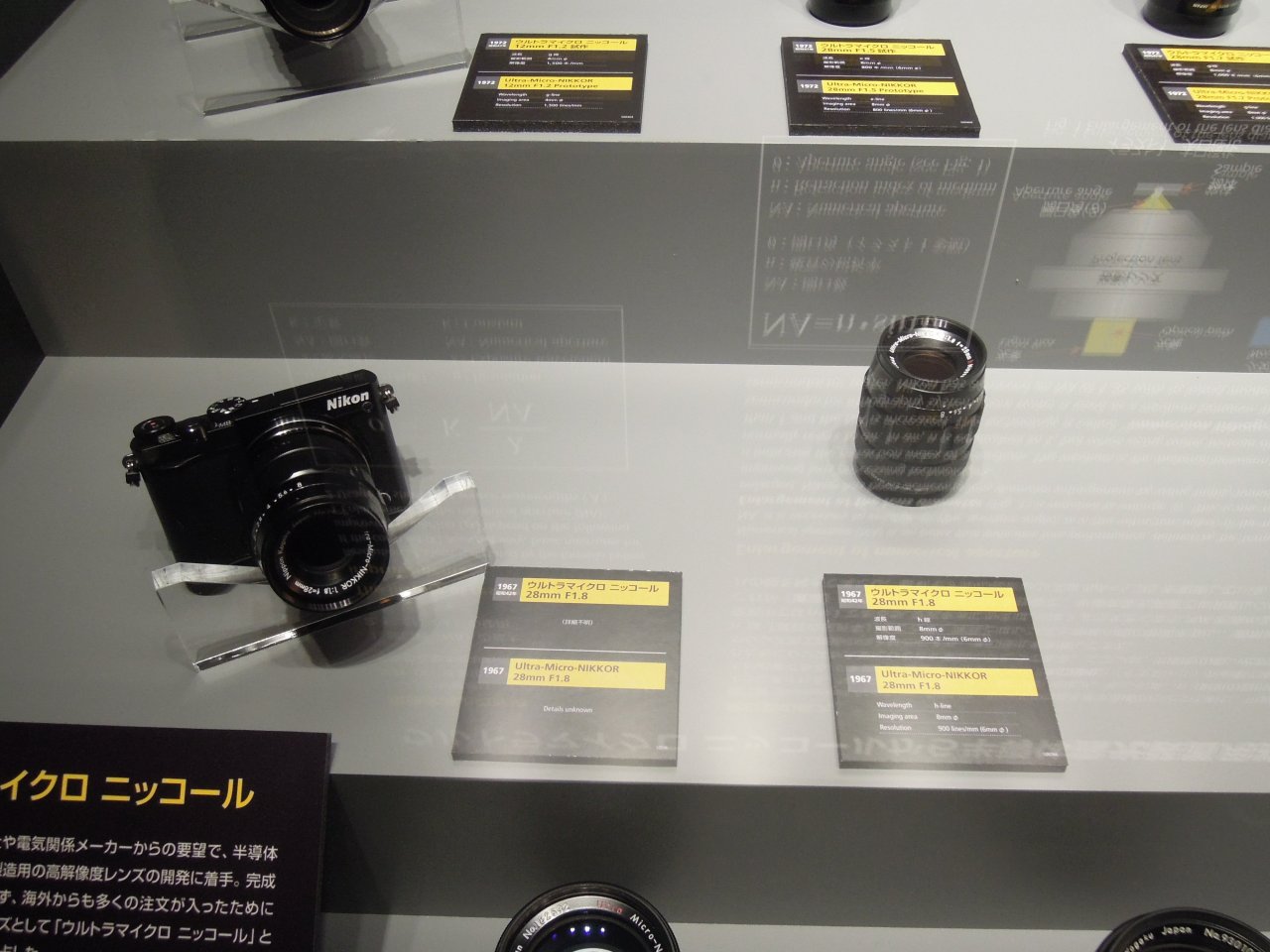
Special Exhibition Ultra-Micro-NIKKOR at Nikon Museum
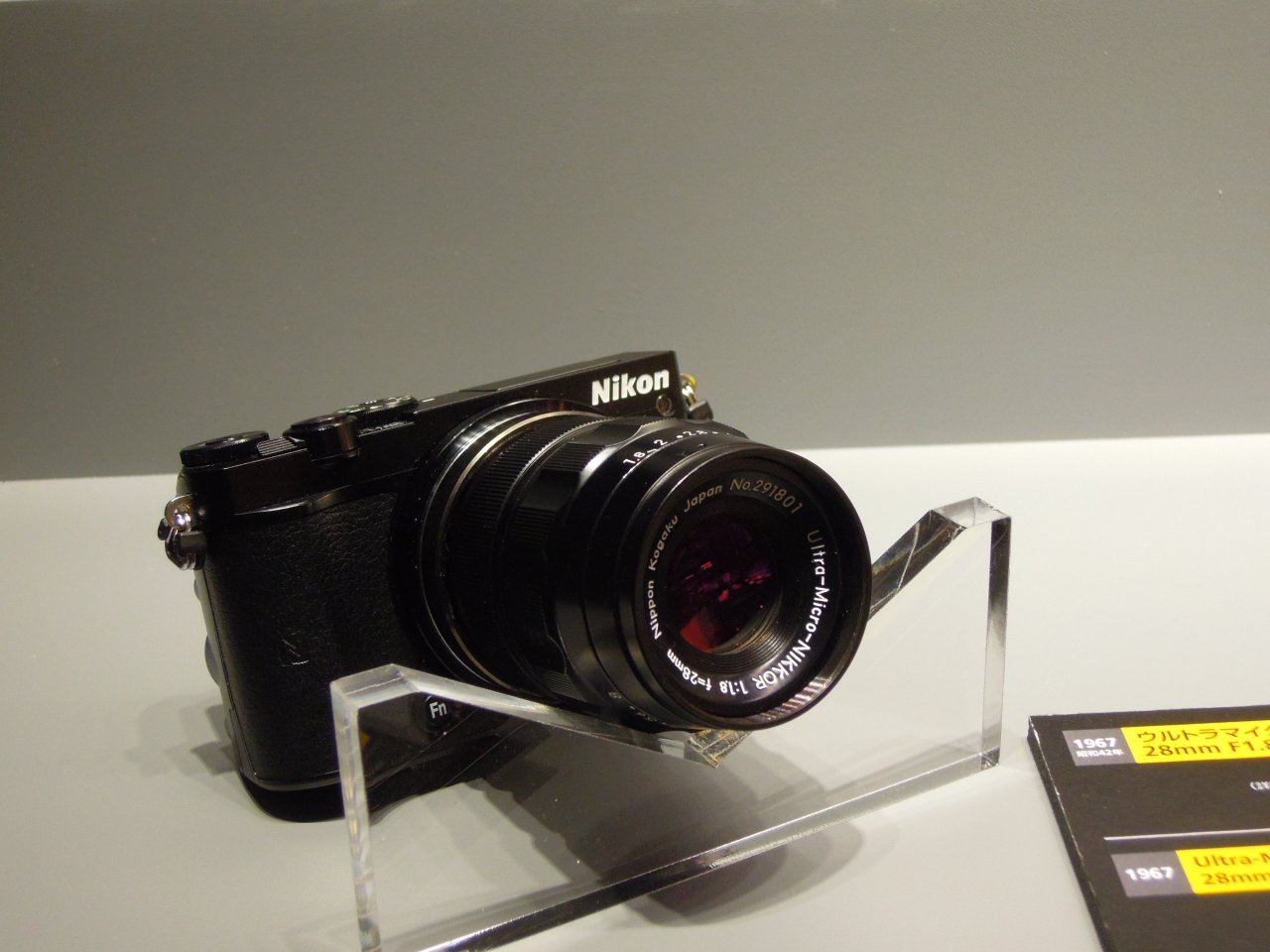
Ultra-Micro-NIKKOR 28mm F1.8 Early Model, 1967
No. 291801
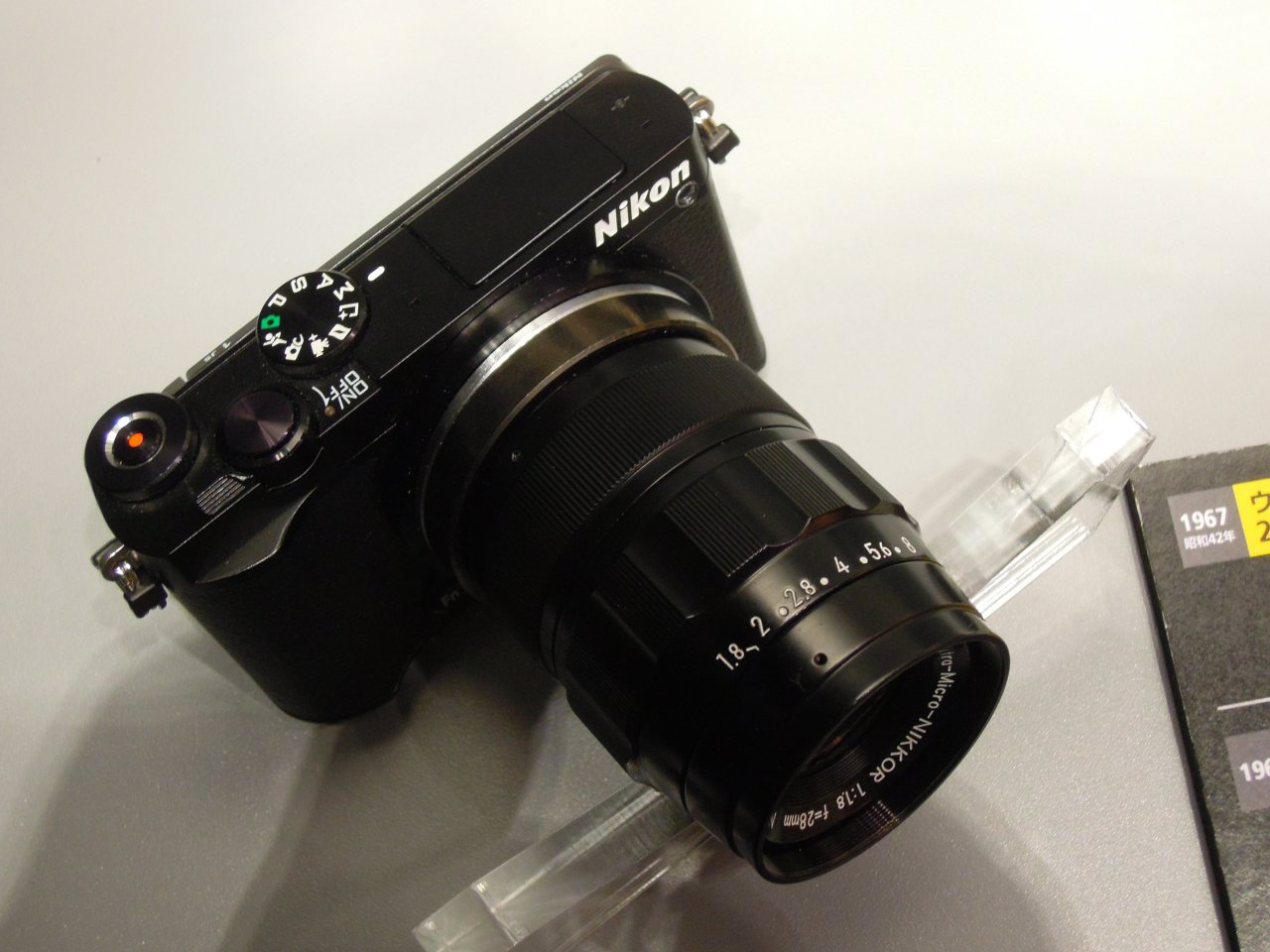
Nikon 1 J5 and Ultra-Micro-NIKKOR 28mm F1.8
These photo images were introduced from the Nikon Museum Special Exhibition "Ultra-Micro-NIKKOR".
The special exhibition was held from April 3, 2018 to June 30, 2018.
Please brose to the report for detailed explanation.
Nikon Museum Special Exhibition Report
Back to RED BOOK NIKKOR
Copyright Michio Akiyama, Tokyo Japan 2001, 2021
| 
















